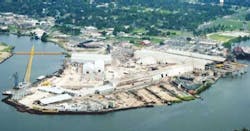Downhole monitoring, control using digital distributed sensing
Garth Naldrett - Tendeka
Real-time, accurate downhole monitoring data is crucial to understanding and controlling wellbore and reservoir performance while maximizing oil and gas extraction. An increasingly used method to get this data is permanently installed downhole monitoring sensors in production and injection wells. Of growing importance in this trend is fiber optic distributed temperature sensing (DTS).
While fiber optic technology is relatively recent compared to other electrical downhole sensors, its ability to monitor the complete wellbore from top to toe, the use of passive in-well components, long field life, and non-intrusive flow monitoring means rapid adoption.
DTS development
Fiber optic monitoring has come of age and delivers meaningful information rather than vast amounts of unmanageable temperature arrays. New generation high-resolution monitoring units coupled with advanced data management solutions enable this shift. Using the system in combination is known as digital flow profiling (DFP).
In practice, DTS data is transmitted from the field in an open format Wellsite Information Transfer Standard Markup Language (WITSML), through the firewall to a secure database inside the client network. The client gets full ownership and management of its own DTS data, and multiple end users can access this information using a Web interface if the operator wishes. DTS data is presented with relevant contextual data, including wellbore survey data, completion diagrams, log data, and production data.
Data is quickly accessible and less time is spent manipulating data sets to ensure greater user acceptance in the surveillance plans. DTS data is often the first port of call to identify production issues, not the last resort as it had been prior to the adoption of user friendly DFP data management packages.
Downhole monitoring in action
In 2007, a major operator awarded Tendeka companies Sensornet and FloQuest a five-year contract to engineer, procure, install, and manage its fiber optic digital flow profiling systems. These differ from conventional DTS equipment in that they were designed from the ground up to provide a flow profile rather than vast arrays of raw temperature and pressure data. This involves high-performance measurement equipment coupled with novel in-well cable designs and requires the resulting data to be handled by an effective data management and interpretation tool.
The contract engineering phase ensured the in-well equipment was properly designed for the downhole conditions and could be deployed in tortuous horizontal wellbores. This resulted in 100% reliability with no downhole failure or degradation, despite horizontal intervals in excess of 2,500 m (8,202 ft). All the cables were installed with feed-through splices to avoid in-well connectors. Not only has operation been trouble free, but also allows improved measurement performance due to lower optical loss. During early evaluation in a static wellbore, the system had temperature resolution better than 0.008 °C. The resolution has been critical to ensure the horizontal well performance, with small thermal deviation, can be assessed.
While DFP systems are being installed in newly drilled wells, an increasing number are deployed in existing wells when electric submersible pumps (ESPs) are approaching the end of life. As the field produces relatively heavy crude, and reservoir pressures are sub-hydrostatic, all production wells need artificial lift. The preferred lift solution often is ESPs, which complicate wellbore access for production logging. As a consequence, reservoir production data previously had been acquired only on very few wells, despite over a decade of production from the field. The operator had no opportunity to comprehensively understand the reservoir, in particular the complex fracture network.
Overall surveillance strategy
When reviewing their overall field surveillance strategy, the importance of reservoir data acquisition through permanent monitoring devices was found to be one of the most important variables in allowing the desired recovery factor to be achieved. Given the restriction imposed by ESPs the only option for complete data acquisition across production intervals was a DFP system.
The data gathered has increased the understanding of the complex fracture network in the reservoir, and has given the operator greater appreciation of issues surrounding long horizontal liners and cement integrity behind the liners. This information has allowed production improving modifications and assessments carried out on new methods of creating annular barriers outside of the liner section. By incorporating swellable packers outside the liner, subsequent wells have isolated problematic zones, verified through the use of the monitoring system.
Digital well integrity
Digital well integrity is a further benefit of full wellbore coverage using DTS systems. The technology was installed in an adjacent field to monitor the temperature profile across gas lift systems in the upper part of the completion. As injection gas moves from the annulus into the tubing string it is throttled, accurately termed Joule-Thomson cooling.
This cooling allows the gas injection position(s) to be accurately determined, making it possible to differentiate between injection through valves or through a tubing leak to monitor well start-up in real time without intervention. By monitoring the sequence of injection valves issues can be identified and interventions planned, if required. This can save many man hours and tens of thousands of dollars to replace the wrong valves.

